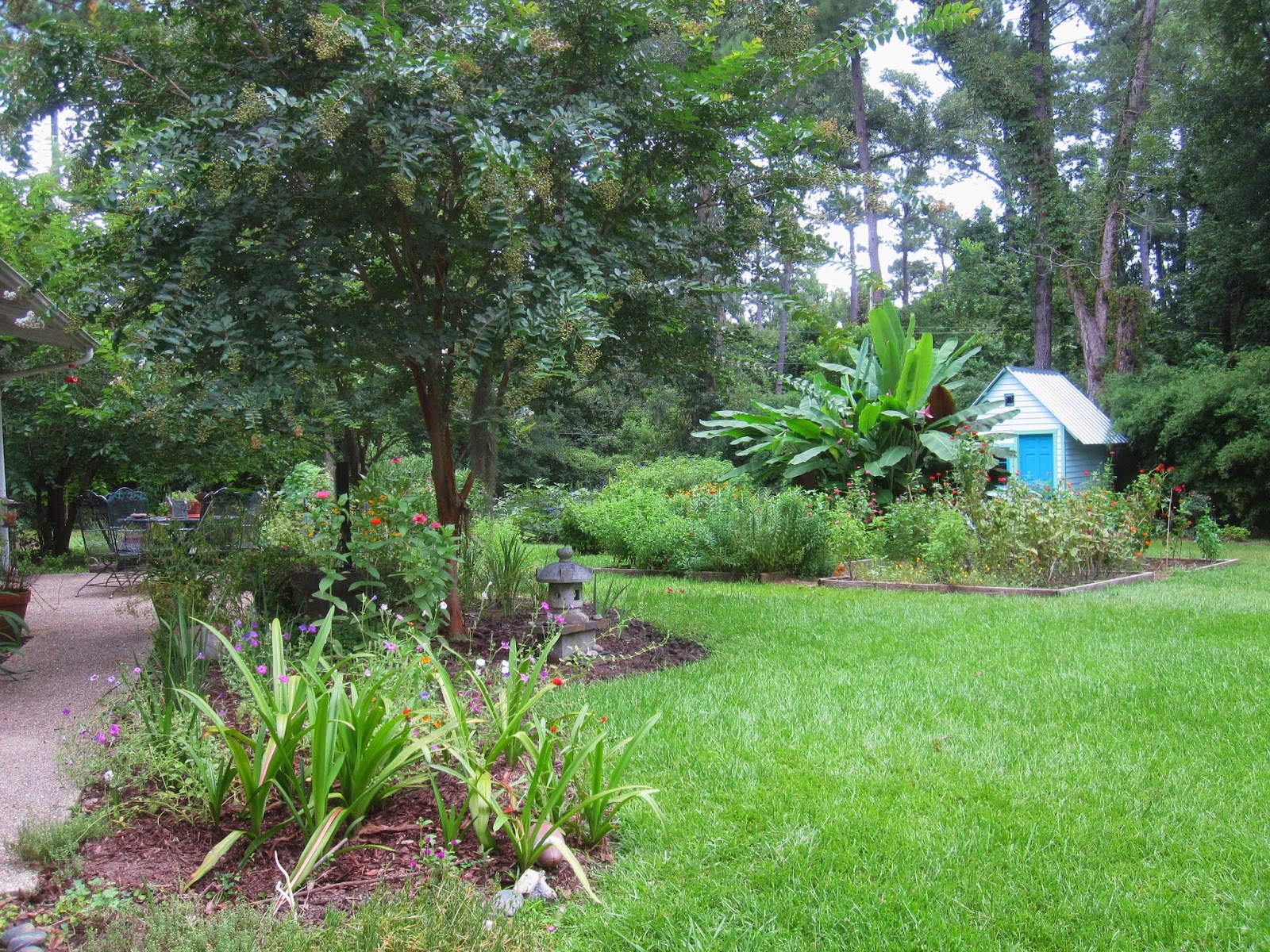 |
| salsa we canned the first week of July, using tomatoes from our garden |
- Albuquerque, New Mexico: 9.39 inches
- Duluth, Minnesota: 30.94 inches
- Austin, Texas: 34.25 inches
- Atlanta, Georgia: 49.74 inches
- Crescent City, California: 71.26 inches
- Seattle, Washington: 37.13 inches
For the first time this year, I planted blue borage in one of my herb beds. The plants sprouted and began to grow vigorously. By late June, every plant had succumbed to a fungal disease; the weather was just too wet for borage to thrive. Our tomatoes, also, suffered from the very wet weather, the Cherokee Purple tomatoes being the first to succumb. We did harvest a few Cherokee Purple tomatoes before the plants finally died. Our other tomato plants grew eight or nine feet tall, but they, also, suffered from fungal disease (probably septoria leaf spot), which begins at the bottom of the plants, where rain splashes the spores. These plants did live to provide us with lots of tomatoes though perhaps not as many as might have been possible had they not been affected by the disease. A few fruits continue to ripen on the vines, which look very bedraggled now. Perhaps next year we will mulch the plants after the vines are big enough where the cut worms can't get at them. Mulch should help prevent the splashing of spores.
 |
| vegetables from our garden, gathered mid-July |
 |
| sliced persimmon tomato--The plants did not produce a lot, but the fruits they did produce were big and juicy. |
 |
| gourd and cucumber trellis, late June |
 |
| gourd and cucumber trellis, late July |
 |
| gourd and trellis in the vegetable garden, July |
Our yard is now very lively with wildlife. The birds like to hide and scratch in the numerous flower beds and to perch on the very tall Maximilian sunflowers and banana trees. Catbirds and mockingbirds--as well as cardinals and red-bellied woodpeckers--peck at the figs as soon as they begin to ripen. We have noted numerous juvenile birds at our bird feeders: cardinals, titmice, Eastern towhees, brown thrashers. And one morning we watched a mother bunny nursing her young bunny near a brush pile Tom left unburned when he realized the baby bunny was living in it. That brush will probably stay in our yard until winter--or at least until we're sure the bunny has moved out. Tom created brush piles on the margins of our property, in the understory, hoping that the bunny would find those less obtrusive piles more suitable for hiding from red-tailed hawks and other predators.
 |
| Maximilian sunflowers began to bloom in late July. |
 |
| Younger black-eyed Susan plants near the patio bloomed in the spring and again in the summer, but these older plants, planted near rosemary and salvia in full sun, did not bloom until July. |
 |
| back yard, late July |
 |
| black swallowtail caterpillar on flat-leaf parsley growing near our patio |
 |
| black swallowtail butterfly, I think, though other butterflies are often mistaken for it-- photo taken in July |
 |
| may be a pinevine swallowtail, photo taken in late July |
 |
| yellow swallowtail butterfly, late July |
 |
| bumblebee clinging to the bottom of a spotted horsemint leaf, planted in a pot near our patio |
 |
| honeybee on zinnia flower, late July |
 |
| The stump of a water oak we had cut down last summer is now surrounded by a flower bed with black-eyed Susans, yellow lantana, and Confederate Rose. By next summer, these plants should fill out the flower bed. |
 |
| Another water oak stump is surrounded by a flower bed in which Tom planted native Turk's Cap (at the eastern edge of its range), and I have planted native fall asters and yellow lantana. The Turk's Cap will grow into large bushes. |
 | |
| Turk's cap flower | ' |
No comments:
Post a Comment